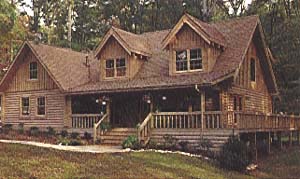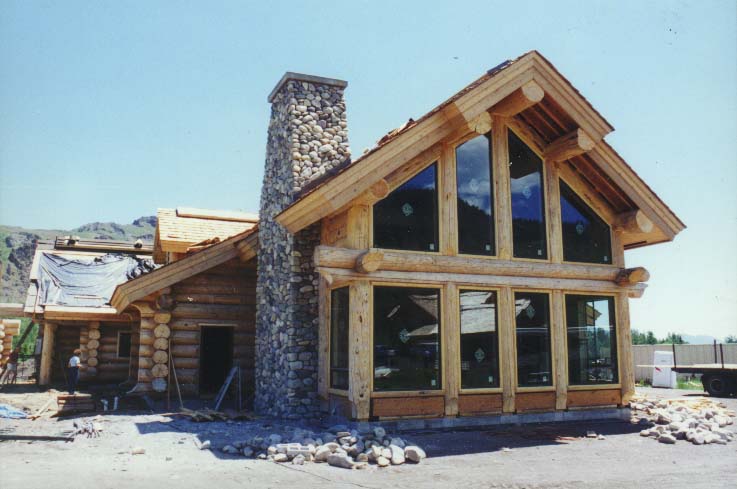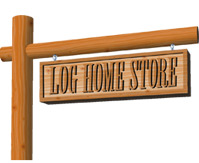 A milled log home – courtesy of Tennessee Log Homes Inc. |
People are sometimes confused by the distinction between milled and handcrafted logs.
A Milled Log is one that has been put through a saw mill lathe or planer and has been cut into a specific shape or profile.
Milled log kits are generally..
- Lathed turned, milled or shaped, usually removing all bark to give a smooth uniform finish
- Cut to a uniform shape and size…such as 6″ x 8″ D Log, or 10″ Coped
- Milled kit logs can have a butt & pass corner, dovetail corner, round notch and a myriad of other style
- Milled logs kits can be designed to have a chinking gap between each layer of logs (aka Appalachian Style), or they can be tight to one another so
Logs may have a flat top and bottom surface may be coped or may be tongue-and-grooved. The sides of the log can be sanded smooth left with a rougher or more rustic look or hand peeled with a draw knife. Milled logs are usually air and or kiln-dried to a specific moisture content before they are used to build your home.
Handcrafted Logs
 A scribe fit log home – courtesy of A Place In The Sun Log Homes Inc. |
Handcrafted logs are either hand-peeled with a drawknife or water-peeled. Logs used in handcrafted construction most commonly are Douglas Fir Pine or Spruce. Several other species are occasionally used such as Oak Cyprus Juniper and True Firs such as Alpine Fir. Logs can be used Green basically within days/weeks of cutting and hauling; Air Dry which is a designation that is subject to vast debate as to when does a Green log become an Air Dry log and in a very few cases kiln dried. (Kiln drying full size logs for handcrafting is an expensive process and used by only 1 or two companies in North America).
The logs are then fit together in one of several ways. Scribe-fit is a style popular in this region. In this style one log is scribed to precisely fit over the log below it. The scribe-fit style needs no chinking and is usually joined at the corner using a shrink-to-fit saddle notch system. Another way logs are fit together leaves a space between each round of logs that will be filled with a backer rod material and chinking. This style is called chinked. Other styles are piece-en-piece and hand-hewn dovetail.
Handcrafted log homes are generally most expensive than milled log homes because there is so much more labor involved and often larger material is used.
“

